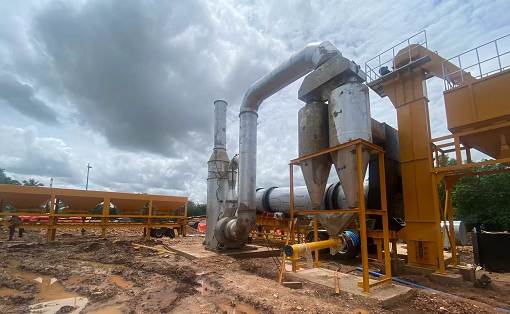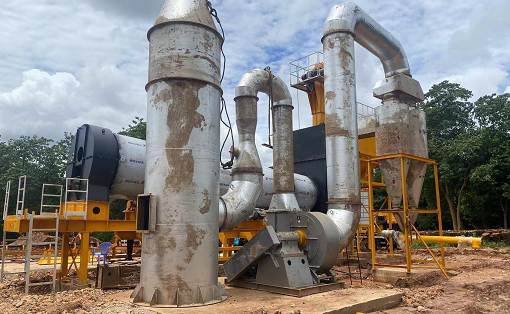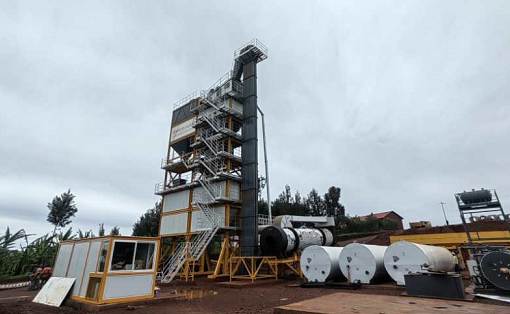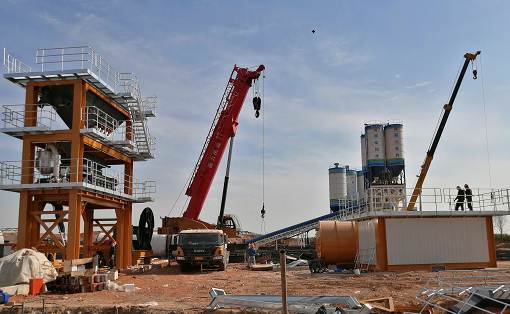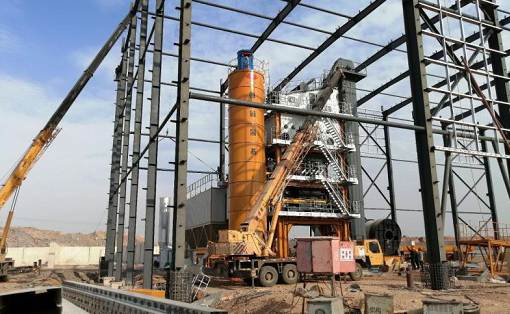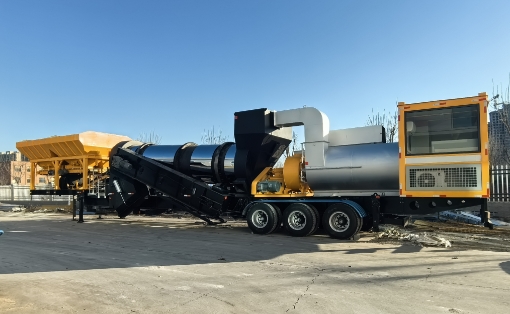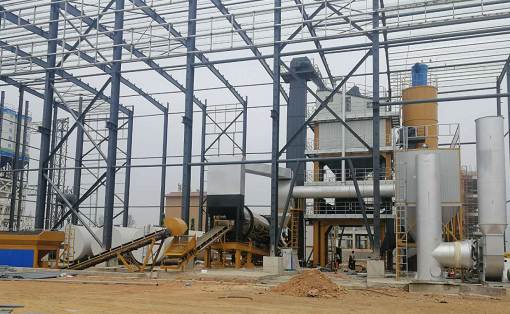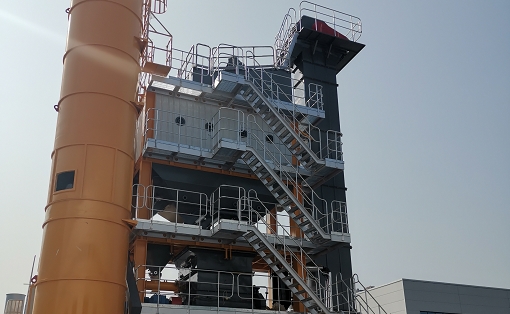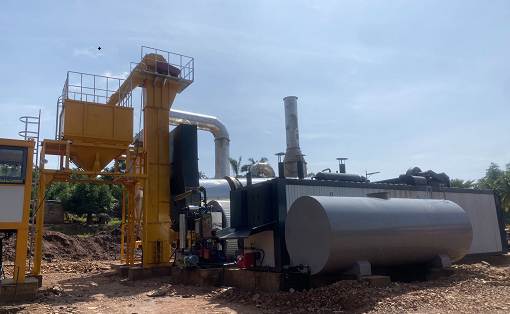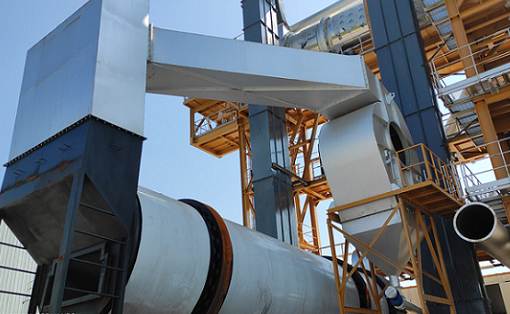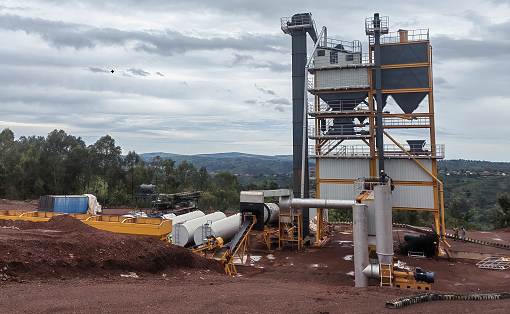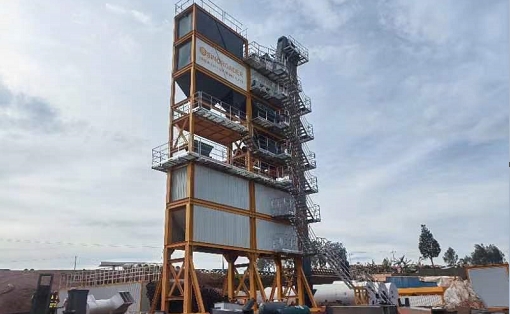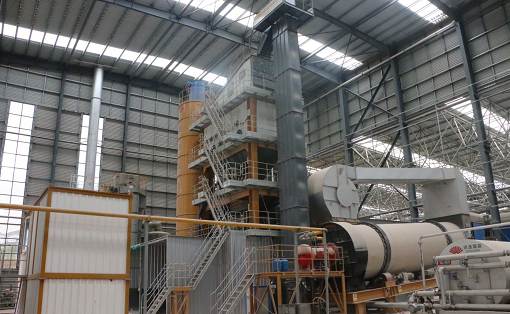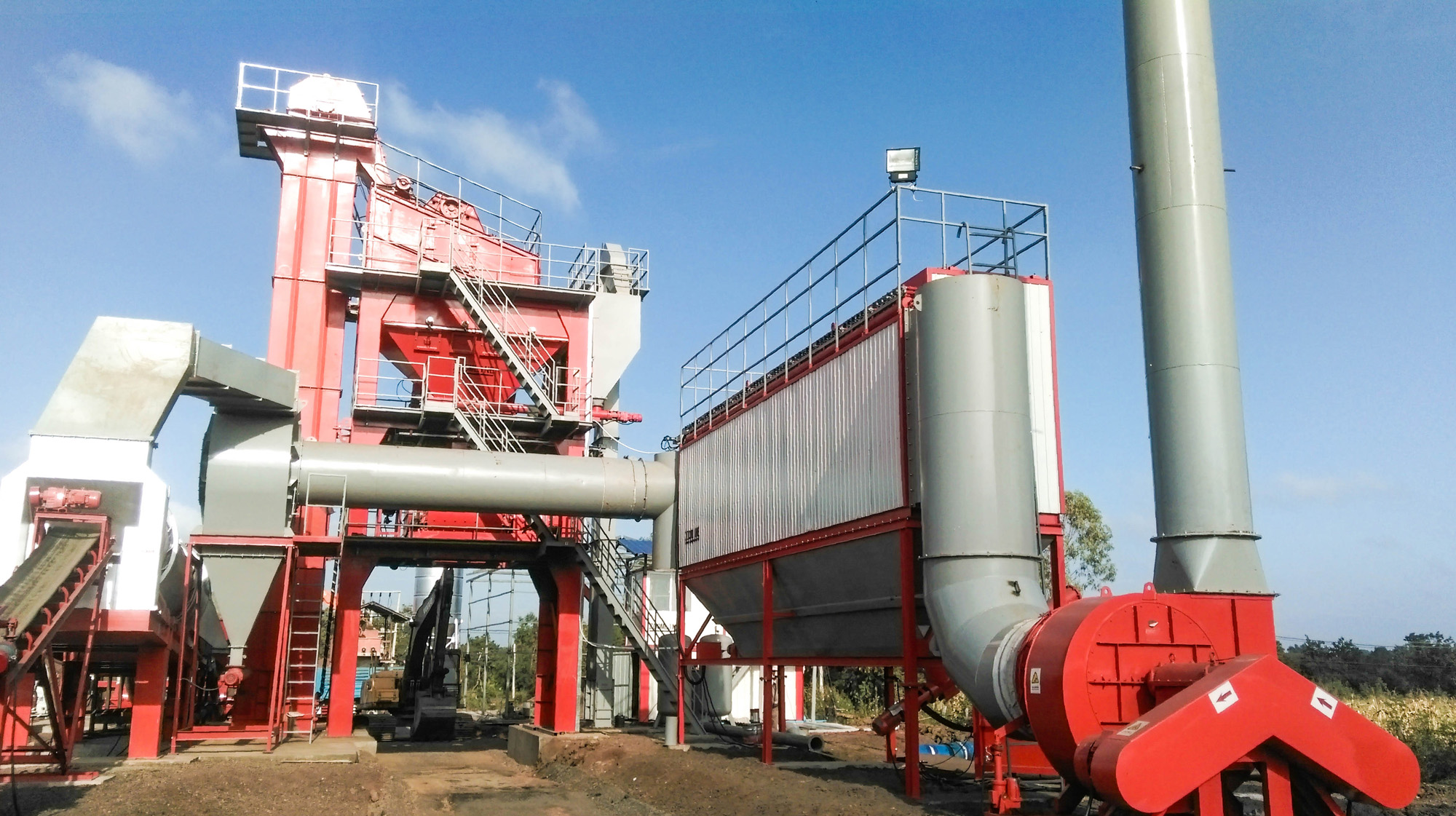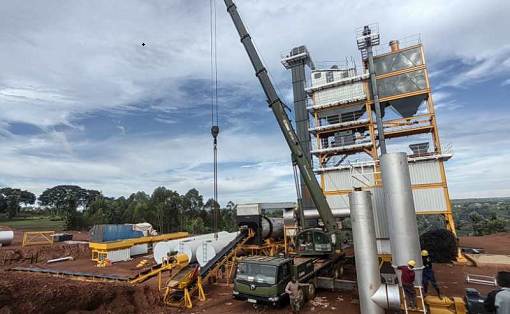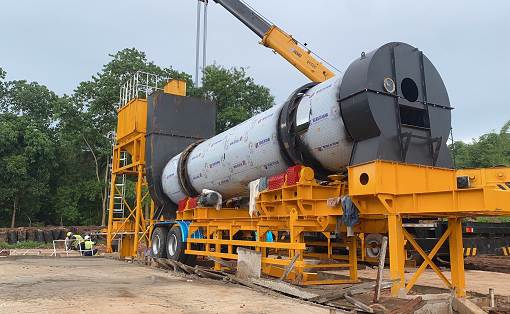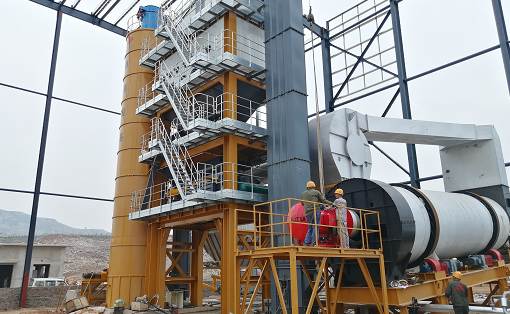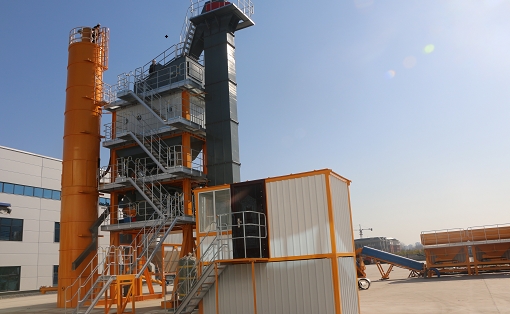Safety measures for natural gas asphalt mixing stations
Natural gas is a colorless, odorless, flammable and explosive gas, the main component of which is methane, which accounts for about 98% of natural gas. The density of natural gas is lower than that of air and it is difficult to liquefy. Natural gas is not only a clean green energy for civil, commercial and industrial use, but also a raw gas for chemical industry. The theoretical ignition value of natural gas is 540 degrees, the combustion temperature is 1970 degrees, the calorific value is 40MJ/m3, and the explosion limit is 5%-15%. CNG refers to natural gas that has been compressed to 20-25MP and stored in high-pressure gas tank trucks, and then transported to various gas transmission points to supply gas to residential users, commercial users and industrial users. In order to ensure the normal operation and safety of the asphalt mixing station and our pressure regulating station, our company has specially formulated the following safety protection measures.
Natural gas is a colorless, odorless, flammable and explosive gas, the main component of which is methane, which accounts for about 98% of natural gas. The density of natural gas is lower than that of air and it is difficult to liquefy. Natural gas is not only a clean green energy for civil, commercial and industrial use, but also a raw gas for chemical industry. The theoretical ignition value of natural gas is 540 degrees, the combustion temperature is 1970 degrees, the calorific value is 40MJ/m3, and the explosion limit is 5%-15%. CNG refers to natural gas that has been compressed to 20-25MP and stored in high-pressure gas tank trucks, and then transported to various gas transmission points to supply gas to residential users, commercial users and industrial users. In order to ensure the normal operation and safety of the asphalt mixing station and our pressure regulating station, our company has specially formulated the following safety protection measures.
[1]. Set up a 2-meter-high solid isolation wall on the north and west sides of the natural gas pressure regulating station parking lot to ensure that the pressure regulating station operation does not interfere with the oil or asphalt unloading work of the mixing station. Set up a control cabinet in the operating room of the shearing machine pressure regulating station to display the inlet and outlet pressure and temperature, check regularly and compare with the on-site instruments to achieve double insurance. An anti-static grounding wire is installed on the high-pressure gas unloading column. When the pry truck is unloading gas, the anti-static grounding wire is connected to the pry truck to prevent static electricity from being generated during the unloading process.
[2]. Set up warning signs and entry notice signs at the entrance of the pressure reducing station to prohibit outsiders and vehicles from entering the station area. It is strictly forbidden to stack flammable and explosive items in the natural gas pressure regulating station. The duty personnel of the pressure regulating station must strictly implement the post responsibility system and the handover system, carefully keep duty records, and must not leave their posts during work. People entering the station should pay attention to the following points:
1. The natural gas pressure regulating station is a key fire prevention area. It is strictly forbidden to smoke or carry fire in the station, and it is strictly forbidden to pile up sundries and flammable and explosive items.
2. Outsiders are strictly prohibited from entering the station without permission.
3. People entering the station are strictly prohibited from wearing chemical fiber clothing and iron spiked shoes, and are prohibited from making phone calls, taking photos and videos, etc.
4. Equipment, instruments and other items in the station are strictly prohibited for non-station staff.
5. CNG skids must wear fire caps when entering the station, and all other vehicles are prohibited from entering the station.
6. It is strictly forbidden to perform operations and heating operations that may produce sparks near the skids.
7. The working pressure of the skid shall not exceed 20MPa.
8. Regularly check whether the skid has leaks, regularly check the connections of each valve and pipeline, and repair them in time if any problems are found.
9. Regularly check the safety valve and pressure gauge to see if there is any leakage, and regularly check whether there is any foreign matter in the vent pipe.
10. When skids enter the station, it is necessary to check whether they are wearing flame arresters.
11. If the pry truck breaks down, it must be repaired outside the station. 12. Before unloading gas from the pry truck, the anti-skid wooden wedges should be fixed to prevent the vehicle from moving during the unloading process and causing an accident. 13. Before unloading natural gas from the truck, ensure that the electrostatic grounding device is well connected.
[3]. 1. Regularly conduct safety education and training for employees, including: basic properties of natural gas, safety precautions for pressure regulating stations, safety management system, how to use fire extinguishers in the station, emergency plan drills, safety accident case analysis and other safety knowledge and fire protection knowledge.
2. Employees have received special job technical training, passed the examination and obtained special equipment operation certificates.
3. Regularly conduct safety assessments. The content includes: safety system, work tasks, safe operation of equipment, maintenance of safety facilities, etc.
4. Clarify precautions and prevention methods for each position.
5. Clarify emergency response measures in the event of an emergency.
[4]. Complete data such as pipeline construction drawings and equipment drawings should be archived and preserved in the station. A natural gas facility inspection and maintenance record management system, a natural gas facility operation record management system, and a CNG skid truck entry registration management system should be established to ensure that the pressure regulating station and other related facilities can operate normally, so that the cause of the fault can be quickly found through records when a fault occurs.
[5]. The asphalt mixing station of Section 9 of Zhangshi Expressway should provide fire extinguishers for the pressure regulating station (one 35KG trolley-type dry powder fire extinguisher, two 4KG dry powder fire extinguishers placed next to the pressure reducing skid; two 4KG dry powder fire extinguishers placed in the control room; two 8KG dry powder fire extinguishers placed on the DN200 pipe close to the main burner; two 4KG dry powder fire extinguishers placed on a DN80 pipe close to the small burner used for asphalt heating) to ensure that in special circumstances, our station staff can use fire extinguishers to deal with emergencies and regularly check whether the pressure indication of the fire extinguisher is normal (if there is any abnormality in the fire extinguisher, the Zhangshi Expressway Section 9 Project Department should replace it in time). How to use a fire extinguisher:
Hold the handle with your right hand and the bottom of the extinguisher with your left hand, and gently remove the extinguisher
Carry the extinguisher to the scene with your right hand
Remove the lead seal
Pull out the safety pin
Hold the nozzle with your left hand and hold the handle with your right hand
At a distance of two meters from the flame, press the handle with your right hand, and swing the nozzle left and right with your left hand to spray dry powder to cover the entire burning area.
[6]. The power switch of the pressure regulating station is dedicated to the station. No one can open or close the power supply of the pressure regulating station privately to avoid affecting the normal gas supply operation.
[7]. After the skid truck delivers natural gas, the station personnel should check all connection parts and partition devices, and regularly patrol around the pressure regulating station to detect whether there are leaks, open flames, etc. It is strictly forbidden to use natural gas pipelines for electric welding ground wires, hanging and leaning objects. It is strictly forbidden to use iron tools to knock on pipelines and valve bodies to avoid sparks.
[8]. No one in the mixing station is allowed to enter the pressure regulating station area. If there are special circumstances, they must be allowed to enter with the permission of our station staff and enter with their accompaniment. During this period, it is strictly forbidden to touch the facilities in the station. If violated, a fine of 100 yuan will be imposed, which will be doubled in the future. The safety department of the 9th section of the Zhangshi Expressway Project Department must conduct safety training for the mixing station staff and strictly restrain the various behaviors of the staff. If the mixing station staff violates the regulations of the pressure regulating station and enters the station area, the mixing station shall bear full responsibility.
In order to protect the life and property safety of the asphalt mixing station and our personnel, please consciously abide by the above safety measures.

